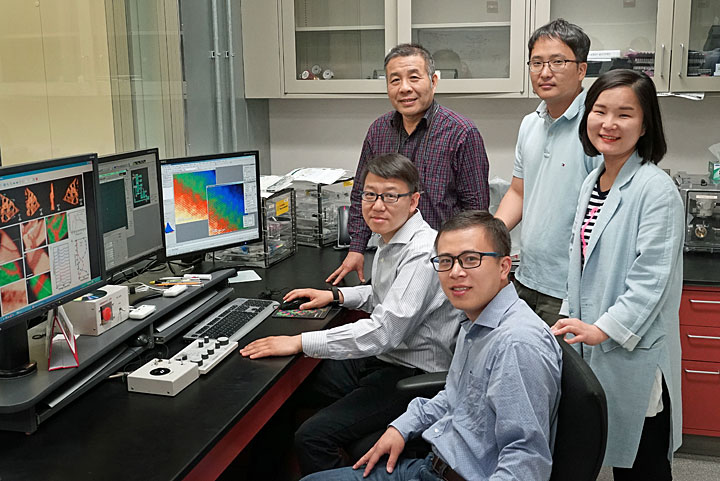intercalation (countable and uncountable, plural intercalations) (chemistry) The reversible insertion of a molecule between two others. Wiktionary Enyuan Hu, a chemist at Brookhaven National Laboratory explains the importance, and limitations, of intercalation in battery chemistry. “The materials normally used in lithium-ion batteries are based on intercalation chemistry. This type of chemical reaction is very efficient; however, it only transfers a single electron, so the cathode capacity is limited. Some compounds like FeF3 are capable of transferring multiple electrons through a more complex reaction mechanism, called a conversion reaction.” Iron trifluoride (FeF3) is composed of “cost-effective and environmentally benign elements — iron and fluorine. Researchers have been interested in using chemical compounds like FeF3 in lithium-ion batteries because they offer inherently higher capacities than traditional cathode materials,” according to Brookhaven. Scientists at the University of Maryland (which led the research), Brookhaven and the U.S. Army Research Lab developed and studied the FeF3 cathode. Xiulin Fan, a scientist at UMD and one of the lead authors of …
Free Battery Software May Free Battery Designers
Your editor used to teach a class on technical writing. One of its premises was that good technical writing should be so clear it helps us see the error of our ways. If the knights in Monty Python and the Holy Grail had done a brief description and a few simple drawings before catapulting cows over their enemy’s walls, they might have realized that they had supplied bovine bombs for the enemy to catapult back. To avoid similar defeats on the stored energy front, engineers at Washington University in St. Louis have cooked up a Cliff’s Notes of how different battery chemistries will behave when being charged. This “back of the envelope calculation,” as Venkat Subramanian, PhD, associate professor of energy, environmental & chemical engineering and his team think of it, is an early predictor of success. Best of all, “The team developed a freely available code that battery developers can use as a model to determine the optimal profile …

